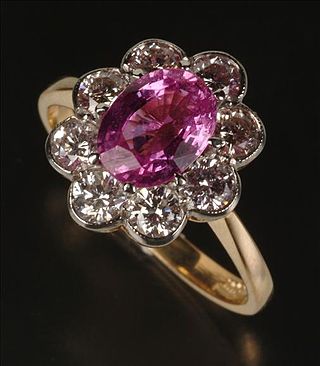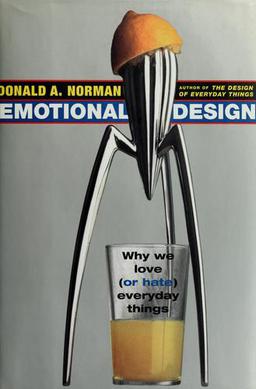
A pastel is an art medium that consist of powdered pigment and a binder. It can exist in a variety of forms, including a stick, a square, a pebble, or a pan of color, though other forms are possible. The pigments used in pastels are similar to those used to produce some other colored visual arts media, such as oil paints; the binder is of a neutral hue and low saturation. The color effect of pastels is closer to the natural dry pigments than that of any other process.

Pink is the color of a namesake flower that is a pale tint of red. It was first used as a color name in the late 17th century. According to surveys in Europe and the United States, pink is the color most often associated with charm, politeness, sensitivity, tenderness, sweetness, childhood, femininity, and romance. A combination of pink and white is associated with innocence, whereas a combination of pink and black links to eroticism and seduction. In the 21st century, pink is seen as a symbol of femininity, though it has not always been seen this way. In the 1920s, pink was seen as a color that reflected masculinity.
Color theory, or more specifically traditional color theory, is the historical body of knowledge describing the behavior of colors, namely in color mixing, color contrast effects, color harmony, color schemes and color symbolism. Modern color theory is generally referred to as Color science. While there is no clear distinction in scope, traditional color theory tends to be more subjective and have artistic applications, while color science tends to be more objective and have functional applications, such as in chemistry, astronomy or color reproduction. Color theory dates back at least as far as Aristotle's treatise On Colors. A formalization of "color theory" began in the 18th century, initially within a partisan controversy over Isaac Newton's theory of color and the nature of primary colors. By the end of the 19th century, a schism had formed between traditional color theory and color science.

A color term is a word or phrase that refers to a specific color. The color term may refer to human perception of that color which is usually defined according to the Munsell color system, or to an underlying physical property. There are also numerical systems of color specification, referred to as color spaces.

A color wheel or color circle is an abstract illustrative organization of color hues around a circle, which shows the relationships between primary colors, secondary colors, tertiary colors etc.
Peach is a color that is named for the pale color of the interior flesh of the peach fruit. This name may also be substituted for "peachy". Like the color apricot, the color peach is paler than most actual peach fruits and seems to have been formulated primarily to create a pastel palette of colors for interior design.
Shabby chic is a style of interior design that chooses either furniture and furnishings for their appearance of age and signs of wear and tear or distresses new ones to achieve the same result. Unlike much genuine period décor, this style features a soft, pastel-colored, cottage look.

Emotional Design is both the title of a book by Donald Norman and of the concept it represents.
In color theory, a color scheme is a combination of 2 or more colors used in aesthetic or practical design. Aesthetic color schemes are used to create style and appeal. Colors that create a harmonious feeling when viewed together are often used together in aesthetic color schemes. Practical color schemes are used to inhibit or facilitate color tasks, such as camouflage color schemes or high visibility color schemes. Qualitative and quantitative color schemes are used to encode unordered categorical data and ordered data, respectively. Color schemes are often described in terms of logical combinations of colors on a color wheel or within a color space.
Visual design elements and principles describe fundamental ideas about the practice of visual design.
Light blue is a color or range of colors, typically a lightened shade with a hue between cyan and blue.
Earth tone is a term used to describe a palette of colors that are similar to natural materials and landscapes. These colors are inspired by the earth's natural hues, including browns, greens, grays, and other warm and muted shades. The term earth tone first became popular in the 1970s during the environmental movement, as people sought to reconnect with nature and embrace more natural and organic lifestyles.

Visual merchandising is the practice in the retail industry of optimizing the presentation of products and services to better highlight their features and benefits. The purpose of such visual merchandising is to attract, engage, and motivate the customer towards making a purchase.
Historic paint analysis, or architectural paint research, is the scientific analysis of a broad range of architectural finishes, and is primarily used to determine the color and behavior of surface finishes at any given point in time. This helps us to understand the building's structural history and how its appearance has changed over time.
Color analysis, also known as personal color analysis (PCA), seasonal color analysis, or skin-tone matching, is a term often used within the cosmetics and fashion industry to describe a method of determining the colors of clothing, makeup, hair style that harmonizes with a person's skin complexion, eye color, and hair color for use in wardrobe planning and style consulting.

Pink colors are usually light or desaturated shades of reds, roses, and magentas which are created on computer and television screens using the RGB color model and in printing with the CMYK color model. As such, it is an arbitrary classification of color.

Color psychology is the study of hues as a determinant of human behavior. Color influences perceptions that are not obvious, such as the taste of food. Colors have qualities that can cause certain emotions in people. How color influences individuals may differ depending on age, gender, and culture. Although color associations can vary contextually between cultures, color preference is thought to be relatively uniform across gender and race.
Color-blocking is thought of as the exploration of taking colors that are opposites on the color wheel and pairing them together to make complementary color combinations. It is commonly associated in fashion as a trend that originated from the artwork of Dutch painter, Piet Mondrian. However, other experts argue whether his artwork is the true origin of color-blocking.

The colors pink and blue are associated with girls and boys respectively, in the United States, the United Kingdom and some other European countries.
An Internet aesthetic, also simply referred to as an aesthetic or microaesthetic, is a visual art style, sometimes accompanied by a fashion style, subculture, or music genre, that usually originates from the Internet or is popularized on it. Throughout the 2010s and 2020s, online aesthetics gained increasing popularity, specifically on social media platforms such as Tumblr, Pinterest, Instagram, and TikTok, and often were used by people to express their individuality and creativity. They can also be used to create a sense of community and belonging among people who share the same interests. The term aesthetic has been described as being "totally divorced from its academic origins", and is commonly used as an adjective.











